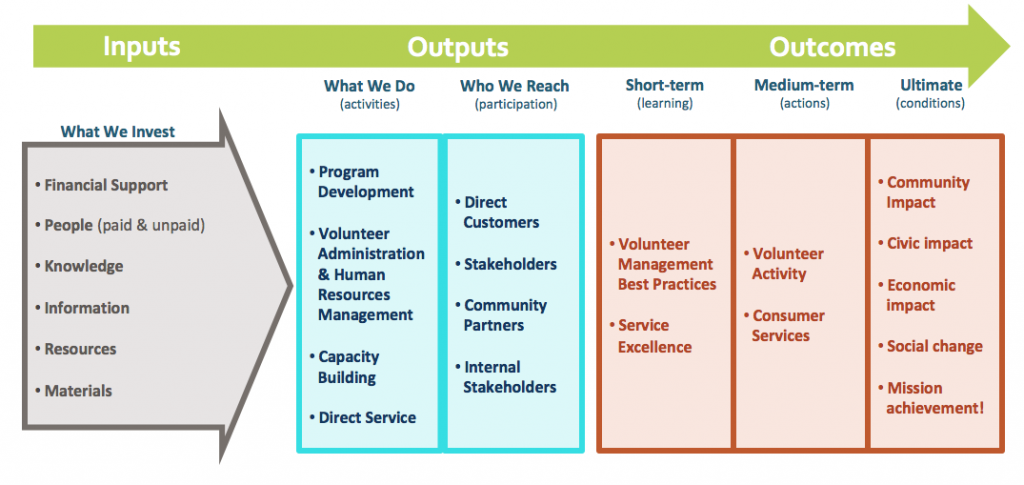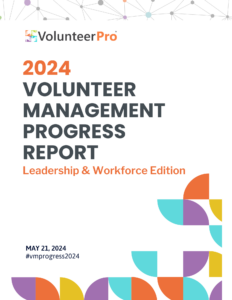Last week, during our masterclass on measuring volunteer impact, I asked participants to consider a shift in thinking about volunteer human resources.
Defining volunteers as human resources is, of course, a traditional way of looking at things in volunteer administration. And, it’s not without merit.
It tends to align with the way we think of employees and as such, the systems we use to engage volunteers often look very similar to paid staff activities — recruitment, screening, placement, onboarding, orientation, retention, etc.
In general, resources are defined as “a stock or supply of money, materials, staff, and other assets that can be drawn on by a person or organization in order to function effectively.”

Economists point to five types of resources that drive the human enterprise:
- Land – natural resources such as iron ore, timber, gold, coal, oil, etc.
- Capital – plants and equipment used in the production of final goods, such as assembly lines, trucks, heavy duty machinery, factories, etc.
- Entrepreneurship – the person or group that marshals resources in the production of final goods
- Technology – tools for business, including knowledge and information management
- Labor – human resources such as wage-earning workers
Labor would also include unpaid workers, such as volunteers.
But, here’s the rub.
When we think of volunteers as human resources, we tend to think of them as inputs into a greater system of change. They are investments necessary to create the greater good. But, that’s only part of the picture.
What’s more, if resources are simply a supply, then they can also be depleted.
Volunteer Human Resources Logic Model
When you map it out on a logic model, or graphic theory of change representing an informed hypothesis about how things work, ew see volunteers as the raw materials we invest (to the far left of the graphic below) rather than placing them as a key player that brings about community outcomes (on the right of the graphic).
When we think of volunteers as resources, we naturally consider the time they donate as a key indicator of success. So, we spend time and effort tracking hours and estimating the value of their time that we can then communicate to stakeholders.
Not all bad. It helps to know how our resources fluctuate over time to better predict a future shortage. But, this approach leaves countless stories of volunteer impact on the table.
Volunteers as Catalysts
If we are interested in demonstrating volunteer impact, we need to shift our perspective about the function of volunteers in our organizations. It may be time to question the use of the volunteer human resources model as the be all end all.
Instead, what if we defined volunteers as a catalyst?
A catalyst is defined as “a substance that increases the rate of a chemical reaction without itself undergoing any permanent chemical change.” It can also be “a person or thing that precipitates an event.”
A catalyst, in this case, is not necessarily something that is used up. It’s something that brings about change or creates the opportunity for processes to be more effective.
And, if engaged effectively, isn’t that precisely what volunteers do?
Now, one might argue that volunteers — as catalysts — also undergo change themselves through service, but you get the point. Volunteers are often the “special sauce” that makes change possible. When you add their contributions of time and talent, amazing things happen.
When we think of volunteers as catalysts versus volunteer human resources, we also transform how we think about their impact (moving to the right of the logic model).
We begin to wonder what specific outcomes are realized because of their contributions (and what might be missing if they weren’t here). What results would you achieve (or not) if volunteers were not active supporters?
When we think of volunteers as human catalysts, we also start to wonder how we can create the conditions that make these changemakers even more effective and powerful.
How can your management drive more purpose, engagement, motivation and growth within your team of talent? And, conversely, what is actively dampening their “can do” spirit?
Start the Conversation: Are Volunteers Human Resources or Catalysts?
So, I encourage you to ask yourself, your co-workers, and your leadership — Are volunteers simply human resources, or can they be powerful agents of change? Are they resources or catalysts?
And, how would our strategy change if we changed our perspective?






